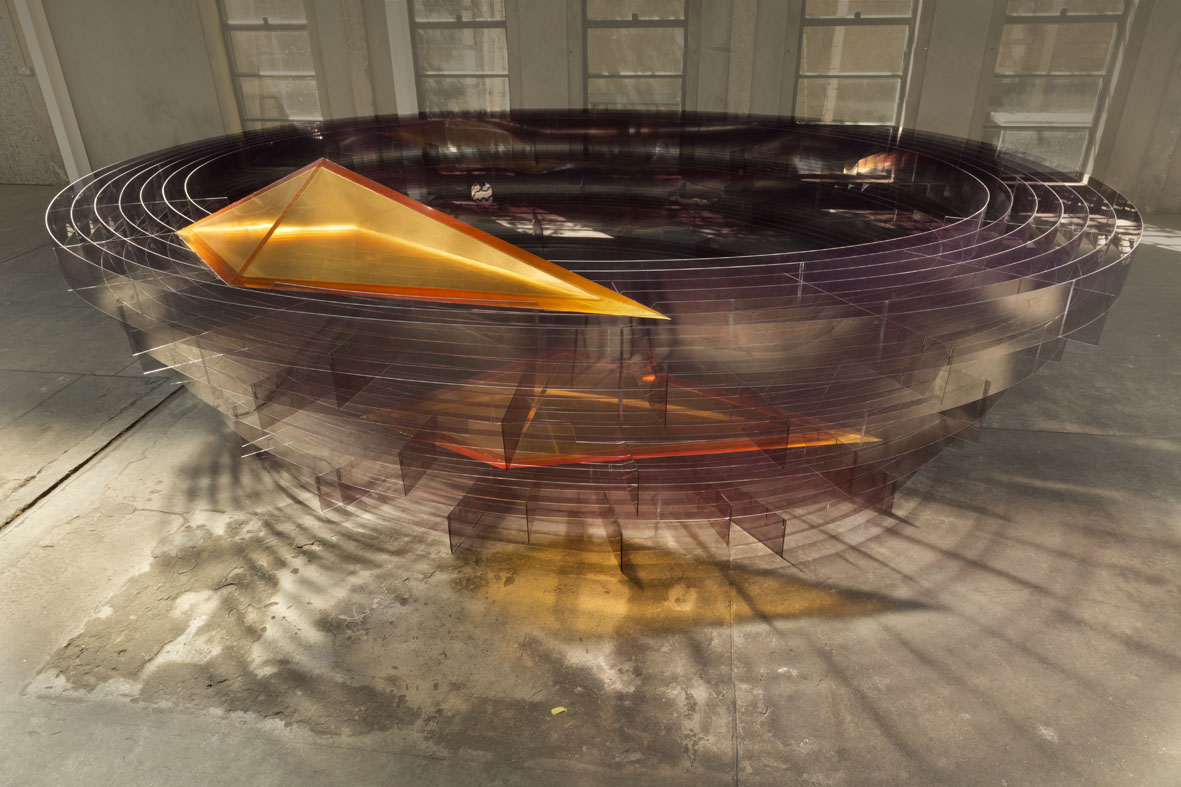Dualities – of materials and forms – are characteristics of Alison Wilding’s sculptures that have been constant throughout her career. Wilding explores her fascination with the physical qualities of materials, and their contrasts and relationships, through the use of both traditional and contemporary sculptural methods such as modelling, casting, and carving. She often works on a monumental scale, using a wide array of materials, including steel, brass, alabaster, wood and rubber. While her work is always powerfully allusive, conjuring visual metaphors in a way comparable to work by Richard Deacon, Wilding’s sculpture is entirely abstract. It operates on its own terms without the need to be ‘about’ anything other than itself, and the conditions of its making. Wilding’s insistence on surface embodies her desire to reveal and explore what is hidden.
Arena (2000) is different from Wilding’s robust sculptures in that it presents us with mass without weight, scale and form with lightness and transparency. Made from concentric bands of transparent grey acrylic, the sculpture rises, billowing out from a narrower base, each new layer slotting in to the one below on lateral struts. Balanced on the rim of the sculpture, as well as nestled inside, are amber wedge-shaped resin lozenges. Their quality of holding light sets up a tension between these two cast elements, two static points in contrast to the restless dynamism of the layered, circling acrylic elements. The work draws the eye to scan across it again and again, interrogating its complexities.
Together, Leeds Art Gallery and the Henry Moore Institute have built one of the strongest public collections of British sculpture in the UK. Arena is a lasting legacy and major work by a leading British sculptor, and therefore represents an important contribution to the collection of abstract sculpture.


